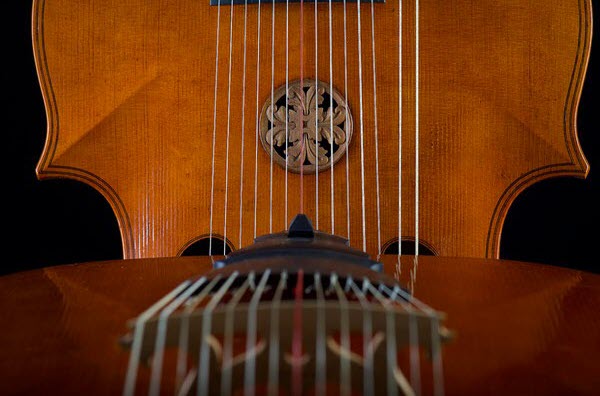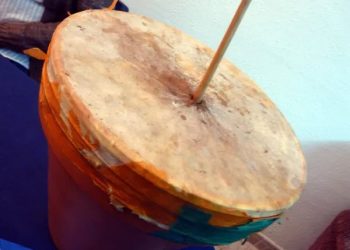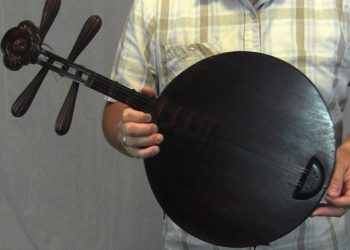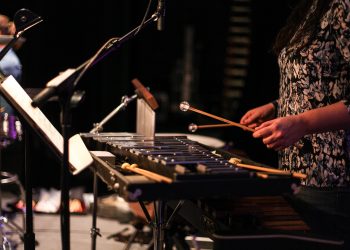Music has always been an essential part of human culture and expression. From ancient times to the present day, musical instruments have played a crucial role in creating beautiful melodies and rhythms that stir our emotions and transport us to different worlds. There are a plethora of instruments out there, ranging from traditional to modern, simple to complex, and from A to Z. In this article, we will take a closer look at the top 13 musical instruments that start with the letter L.
From the lute, a stringed instrument with a long history that was favored by famous composers like Bach and Vivaldi, to the lively Latin American lira, we will explore a range of instruments from different parts of the world. The list will also feature lesser-known instruments like the lujon, a percussion instrument from the Philippines, and the launeddas, a triple-piped reed instrument from Sardinia.
Whether you’re a music lover, a musician, or just someone who’s curious about the rich variety of musical instruments, this article is sure to spark your interest and inspire you to learn more about the fascinating world of music. So, let’s dive in and discover the unique sounds and histories behind the top 13 musical instruments that start with the letter L.
1. Lambeg
The Lambeg is a traditional instrument of Irish music. It is a small, two-headed drum with most commonly eight jingles on each side. The name comes from the Gaelic word “lamh” which means palm or hand and the word “beg”, meaning little. This instrument has been used in Ireland for many centuries to accompany dances such as reels and jigs.
Today, the Lambeg can be seen in all styles of Irish music including rock and hip-hop. Due to its relatively low cost compared to other instruments, it’s accessible to everyone regardless of skill level or financial ability. Its size also makes it an ideal choice when space is limited at a gig or performance venue. Furthermore, its light weight makes transport easy so musicians can take their instruments wherever they need them without worrying about carrying heavy equipment around.
The sound produced by this unique instrument varies depending on how hard you hit the heads and where your hands are placed on the jingle bells. You can create different sounds for different musical genres; for example, if you want a more melodic sound then use softer strokes whereas playing harder will give you punchier rhythms that work better for upbeat tunes like blues or jazz dance numbers. By experimenting with different techniques, there’s no limit to what kind of audio output one could achieve with this versatile percussion device!
No matter what genre you play, incorporating a Lambeg into your performances gives them a distinct flavor that audiences won’t forget anytime soon – an unforgettable experience that’ll keep ’em coming back for more!
2. Langeleik
The Langeleik is a traditional instrument of Norwegian music. It’s a fretted zither with 12 strings and two bridges that are used to produce different tones. Its name comes from the words ‘lang’ which means long, and ‘leik’, meaning play. This stringed instrument has been played in Norway for centuries as an accompaniment for dance tunes and folk songs.
It’s small size makes it ideal for playing indoors or out; its light weight also allows musicians to take their instruments anywhere they need them without worry about bulkiness or heaviness. The sound produced by the Langeleik varies depending on where your fingers touch the strings while strumming – each finger position produces a distinct tone so you can create melody lines quickly and easily without having to learn complex chord shapes like other instruments require.
Furthermore, this unique musical device is incredibly versatile; one could use it in any genre, whether it be classical, jazz, rock or even hip-hop! For example, try playing some intricate melodies over reggae beats to give your song an extra bit of character – something only possible when using the Langeleik!
With its wide range of sounds available, there’s no limit to what kind of audio output one could achieve with this remarkable instrument! Whether you’re looking for a subtle background texture or more dynamic lead lines; whatever style of music you enjoy playing, incorporating a Langeleik into your performances will add another layer of complexity that audiences won’t soon forget – making every performance truly special.
3. Laser Harp
Continuing our exploration of traditional instruments, we now turn to the Laser Harp. This instrument is a modern take on a classic concept, combining light and sound in an eye-catching way. The Laser Harp consists of several laser beams that are projected onto a flat surface where they can be “played” by interrupting them with your fingers or hands – this creates musical notes and allows for complex melodies to be performed.
This futuristic tool has become increasingly popular among DJs looking for something new and exciting to add to their performances. It’s also been embraced by electronic music producers who appreciate its ability to create unique sounds not found anywhere else. Additionally, it makes for a great addition at any gathering due to its impressive visual display as well as its interactive nature – no one will forget about being able to control lasers during your next party!
The Laser Harp isn’t just limited to live shows either – with some practice anyone can learn how to use it in their home studio too! Its small form factor makes it easy to transport so you can bring it along wherever creativity might strike. Plus, many models come equipped with pre-programmed rhythms and melodies which make learning even easier – perfect for today’s tech savvy musician!
So if you’re looking for an innovative way to produce music then look no further than the Laser Harp – whether you want something special for your next show or simply need another creative outlet in the studio, this versatile instrument should definitely be part of your setup.
4. Launeddas
Having explored the modern instrument of the Laser Harp, let’s now move on to something a little more traditional: Launeddas. This ancient wind instrument has been played in Sardinia for centuries and is still used today by some musicians around the world. It consists of three pipes made from reeds that are joined together at one end and then held in the player’s hands—the length allows it to create multiple notes simultaneously.
Using circular breathing techniques, players can sustain a single note indefinitely while also producing different melodies with their left and right hand fingers. Additionally, they often use vibrato or tremolo effects which add texture and variety to the sound. Despite its simplicity, this unique instrument offers plenty of potential when used creatively – it’s no wonder why so many have fallen in love with it!
The launeddas is an incredibly versatile tool as well – it can be used for traditional folk music but is also suitable for jazz or classical genres too. Its hypnotic tones are perfect for creating atmosphere and emotion, making it ideal for live performances or studio recordings alike. Plus, due to its small size it won’t take up much space if you’re looking to add another instrument to your collection!
No matter what type of musician you are, having a launeddas in your arsenal will only enrich your musical experience – whether you want to explore new sounds or stay true to tradition, this timeless instrument should definitely make its way into your setup.
5. Lesiba
Another traditional Russian string instrument is the lesiba. This unique instrument has four strings and a fretted fingerboard, making it even more challenging to learn than the lera. It’s also slightly larger in size and requires greater strength from the player’s fingers to produce its distinctive sound.
What sets this instrument apart is that it can be tuned differently depending on what type of music you wish to play – something no other instrument can do! Its tuning possibilities make it perfect for improvisation or creating complex compositions as each note will have a different timbre when used with another string.
The techniques associated with playing the lesiba are quite advanced compared to those needed for the lera; one example being tremolo which involves rapidly alternating between two notes at once. However, mastering these techniques will give your performance an extra level of skill and flair as well as producing beautiful melodies that would otherwise not be possible without them.
Whether you’re just starting out or an experienced musician, learning how to play the lesiba is sure to provide endless hours of entertainment and satisfaction. So why not pick up your own today and start exploring this fascinating instrument?
6. Lijerica
The lijerica is another popular string instrument from Russia. Similar to the lesiba, this instrument also has four strings and a fretted fingerboard. However, its shape and size are quite different – it’s much smaller than the lesiba and features a unique curved body that makes it both comfortable to hold and aesthetically pleasing.
This small but mighty musical tool can be used for creating melodic tunes either solo or as part of an ensemble; due to its versatility, many folk music styles have been developed around it over the years. Furthermore, with some practice you can learn how to play fast-paced rhythms using techniques like strumming or tapping on the strings – something that cannot be achieved with other instruments!
For those looking to take their playing even further, there are advanced techniques such as vibrato which involve quickly moving your fingers up and down the neck in order to make notes sound more expressive. And by combining these techniques with creative chord progressions, one can create truly captivating pieces of music that will leave listeners spellbound.
Whether you’re just starting out or already an accomplished musician, learning how to play the lijerica is sure to give hours of pleasure and satisfaction. So why not pick up your own today and start exploring what this wonderful instrument has to offer?
7. Lirone
The lirone is a bowed string instrument from Italy, renowned for its haunting sound and ability to produce melancholic melodies. This beautiful instrument is typically found in classical music, particularly Baroque pieces such as Vivaldi’s ‘Four Seasons’. It has seven strings that are played with a bow, which creates an evocative vibrato effect when combined with the player’s fingertips pressing against each of the frets on the fingerboard.
Unlike many other instruments, playing the lirone requires more than just technique – it also demands artistry and emotion. The musician must use their whole body to express all of these qualities while making sure that they don’t lose control over the tone or speed of the piece. As such, mastering this instrument can take quite some time but ultimately yields immensely satisfying results!
In addition to being used in classical compositions, the lirone has become increasingly popular among folk musicians who have adapted it into traditional tunes like jigs and reels. With its unique timbre and versatility, this instrument offers endless opportunities for creativity and expression; no matter what style you’re looking to play, there’s something here for everyone!
From creating sweeping symphonic movements to adding depth to intimate acoustic songs, the lirone truly has something special to offer anyone interested in learning how to play it. So why not give it a try today? You won’t regret it!
8. Lithophone
Now let’s move on to another instrument, the lithophone. Unlike the lirone, a lithophone is an entirely percussion-based instrument made up of stones or glass plates that are struck with hammers or mallets to produce sound. The range of tones produced by this instrument can be quite varied, depending on what type of material it’s constructed from and how it’s tuned.
Unlike most other instruments, playing the lithophone requires more than just technique – it also demands artistry and emotion. To create beautiful music with this unique instrument, one must use their creativity as well as their physicality to craft the perfect combination of sounds. From creating gentle melodic patterns to intense percussive rhythms, there is no limit to what you can do with a lithophone!
It has been used in all kinds of musical genres throughout history; from folk tunes to classical compositions. In recent years, many modern composers have started experimenting with incorporating these ancient instruments into contemporary works as well – lending them an intriguing new dimension which adds depth and richness to any piece they’re featured in.
The beauty of the lithophone lies in its versatility; whether you want to make ambient soundscapes or raucous drum beats, this instrument offers endless possibilities for creative expression! So why not give it a try today? You won’t regret it!
9. Lokanga
Continuing the exploration of traditional stringed instruments, let’s take a look at lokanga. This instrument is said to have originated in India around 500 BC and has since become popular all over the world. Its distinctive sound comes from an arrangement of four strings that are tuned differently than most other stringed instruments. While some describe it as sounding like “a cross between a sitar and a guitar”, others find its unique tones quite mesmerizing!
The way a player creates music with this instrument is very different from playing something like a guitar or ukulele. Instead of plucking individual strings, the musician must learn how to use their fingers to slide along them while strumming all four simultaneously. The result is an unusual blend of notes that can range from light and airy to heavily syncopated rhythms – depending on the skill level of the performer.
One thing that makes learning lokanga so fun for musicians is discovering how many creative possibilities there are within this seemingly simple instrument. From creating complex compositions to improvisational solos, it truly has something for everyone! And because every person brings their own unique style and personality into play when they pick up one of these instruments, no two pieces will ever be exactly alike.
This variety makes listening to lokanga fascinating; each performance creates an experience unlike any other — one that allows listeners to get lost in the beauty and emotion created by each note played. With its diverse sounds and unparalleled ability to bring people together through music, it’s no wonder why this ancient instrument still remains beloved today!
10. Lur
The Lur is an ancient Scandinavian instrument that dates back to the Bronze Age. It’s a long, wooden horn with four fingerholes and a small mouthpiece at one end. This unique instrument has been used for centuries in many different cultures all around the world.
The sound of the Lur is described as hauntingly beautiful and often brings about feelings of nostalgia and longing. Its deep, resonant notes are perfect for expressing melancholic emotions or invoking spiritual energy. The pitch can be adjusted by altering how much air is blown into it from the mouthpiece, allowing players to control their tone more easily than other instruments.
Though similar instruments exist today, the Lur’s design has remained unchanged over time due to its simple construction and ease of use. As such, it’s become popular among folk musicians looking for a way to add depth and texture to their music without relying on modern technology. Additionally, because they’re made out of wood they produce an organic sound which many listeners find pleasing compared to metal instruments like trumpets or saxophones.
Playing the Lur requires some practice but once mastered it provides a truly unique sonic experience that cannot be replicated using any other instrument. Those who take up this traditional musical device will undoubtedly create something special each time they play – whether it be sorrowful ballads or joyous melodies – sure to captivate any audience.
11. Lusheng
The Lusheng is a traditional Chinese wind instrument made of bamboo. It’s typically played in ensemble performances and its unique reed sound can be heard from miles away. This ancient instrument has been used for centuries to provide music for celebrations, religious ceremonies, and other special occasions.
Unlike the Lur, which relies on breath control to change pitch, the Lusheng uses several different pipes with interchangeable reeds that allow players to easily switch between various notes. These pipes are designed so they can produce multiple tones at once, creating complex melodies without requiring any intricate fingerwork or fast reflexes. As such, even beginners can master this instrument quickly and start playing beautiful pieces right away.
Due to its easy learning curve and powerful sonic capabilities, the Lusheng has earned itself a place as one of China’s most beloved musical instruments. Whether you’re an experienced musician looking for something new or just starting out your journey into world music – it’s definitely worth considering adding a Lusheng to your collection!
Its versatility and range make it suitable for almost any type of performance imaginable; from vibrant folk songs to solemn funeral dirges and everything in between – the possibilities are endless when you pick up a Lusheng. With enough practice anyone can create incredible sounds that will captivate listeners wherever you go.
12. Lute
Stepping away from the Lusheng, we turn our attention to another ancient stringed instrument – the lute. As one of the oldest instruments known to man, its warm and melancholic sound has been providing soothing accompaniment for centuries.
The first mention of lutes dates back as far as 2000 BC in Mesopotamia, but they quickly spread throughout Europe via traders and musicians during the Middle Ages. It was highly popular amongst courtly circles and soon became an essential part of many musical traditions across cultures.
Modern lutes are typically constructed with a hollow wooden body covered by thin strips of animal skin or synthetic material called parchment. The head is made up of several strings that run along either side of a fretted fingerboard; these strings are attached to tuning pegs at the end and can be plucked using a plectrum or your fingertips.
Given its long history and traditional charm, it’s no surprise that today’s generations have taken a great interest in learning how to play this classic instrument. Its sweet tones provide an ideal foundation for both solo performances and larger ensembles alike – making it truly timeless!
13. Lyre
The next instrument we explore is the lyre: another ancient stringed instrument with a captivating sound. A descendant of the lute, it dates back to at least 3000 BC in Mesopotamia and was an integral part of many cultures around the world throughout history.
Unlike its predecessor, however, this particular instrument tends to be much smaller in size and typically features just seven strings instead of four or five. It’s also usually made out of wood—usually willow or cedar—and has often been decorated with elaborate carvings or precious metals.
Instead of strumming across all the strings like you would on a guitar, players traditionally pluck each one individually using their fingers for maximum control over volume and pitch. This allows them to create complex melodies that are as intricate as they are beautiful—making the lyre a favorite among composers and performers alike!
In addition to its traditional uses, modern musicians have begun experimenting with new ways to use this classic instrument. By incorporating electronic effects such as looping and reverb, they’ve been able to transform its timeless tones into something entirely fresh and exciting – further proving its enduring appeal!









